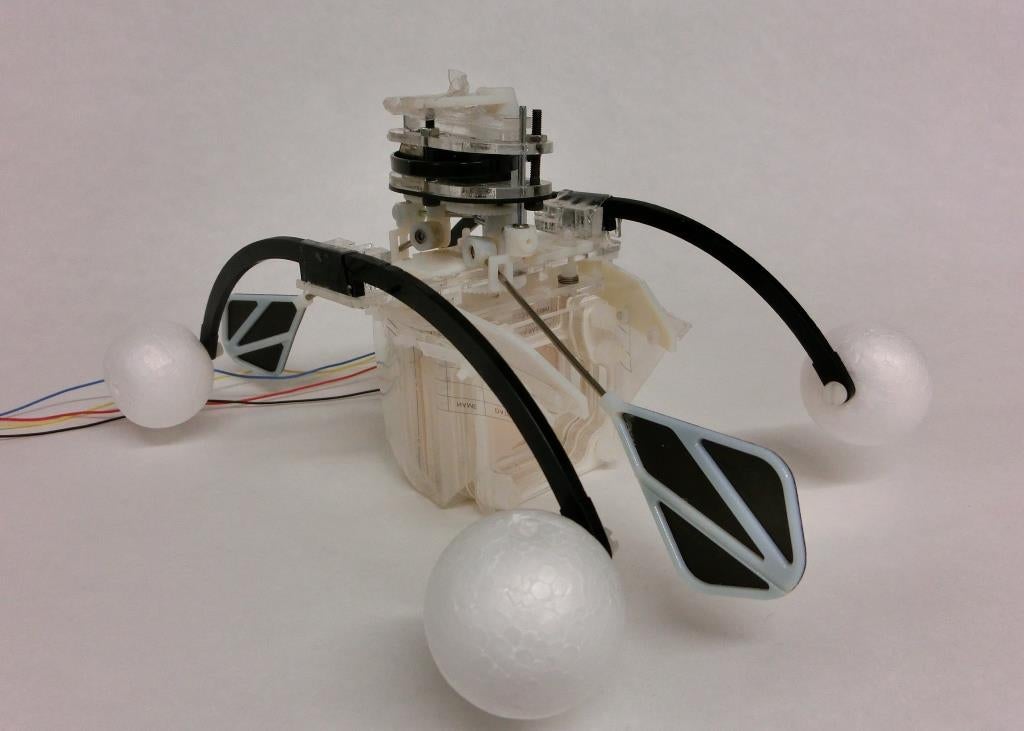UWE developers hail the robot that feeds itself
A new water-born, self-powered ‘Row-bot’ could make a huge impact on environmental clean-up operations

A robot prototype able to scavenge its energy from the dirty water it’s swimming in has been developed by academics at the Bristol Robotics Laboratory (BRL) and Bristol BioEnergy Centre, based at the University of the West of England.
The “Row-bot” is inspired by the aquatic insect the water boatman, mimicking the way it moves and how it feeds on rich organic matter in the water. Its developers anticipate that Row-bot could eventually be used in clean-up operations, such as oil spills.
The project aims to develop an autonomous swimming robot able to operate indefinitely in remote, unstructured locations. When it is “hungry”, the Row-bot opens its soft robotic mouth and rows forward to fill its microbial fuel cell (MFC) stomach with nutrient-rich, dirty water. It then closes its mouth and slowly digests the nutrients. The MFC stomach uses the biodegradation of organic matter to generate electricity using bio-inspired mechanisms. When it has recharged its electrical energy stores, the Row-bot swims off to a new location, ready for another gulp of dirty water.
Jonathan Rossiter, professor of robotics at University of Bristol and the BRL, said: “The work represents a crucial step in the development of autonomous robots capable of long-term self-power. Most robots require recharging or refuelling, often requiring human involvement.”
Hemma Philamore, a PhD student at the laboratory, added: “We anticipate that the Row-bot will be used in environmental clean-up operations of contaminants, such as oil spills and harmful algal bloom, and in long-term autonomous environmental monitoring of hazardous environments, for example those hit by natural and man-made disasters.”
The prototype robot combines two subsystems: a bio-inspired energy source and bio-inspired actuation. The first subsystem shows the power generation capability of the robot. A second duplicate system starts the refuelling process and moves the robot with an energy requirement that is less than the energy generated by the first system. This is achieved by feeding on chemical energy contained in its surrounding fluid to support microbial metabolism inside the MFC.
Mimicking the feeding mechanism of the water boatman, which employs a broad, beak-like mouth to sweep in both fluid and suspended particulate matter, the Row-bot feeds its MFC stomach by opening and closing the mouth-like orifice at each end of the MFC, through the bending of a flexible acetate envelope structure. By using both these systems, the robot can be totally independent in water, providing that enough energy is available in the fluid.
Professor Ioannis Ieropoulos, director of the Bristol BioEnergy Centre, added: “This is a proof-of-concept robot, which follows the EcoBot line of work that is developing autonomous robots capable of generating their energy from the environment they operate in. Row-bot has helped us progress with an aqueous environment in mind, and better design a soft/compliant system that could potentially achieve water clean-up by simply moving along the surface.”
This content was written and controlled by the University of the West of England
Subscribe to Independent Premium to bookmark this article
Want to bookmark your favourite articles and stories to read or reference later? Start your Independent Premium subscription today.

Join our commenting forum
Join thought-provoking conversations, follow other Independent readers and see their replies